new posts in all blogs
Viewing: Blog Posts Tagged with: Shadow Children, Most Recent at Top [Help]
Results 1 - 25 of 37
How to use this Page
You are viewing the most recent posts tagged with the words: Shadow Children in the JacketFlap blog reader. What is a tag? Think of a tag as a keyword or category label. Tags can both help you find posts on JacketFlap.com as well as provide an easy way for you to "remember" and classify posts for later recall. Try adding a tag yourself by clicking "Add a tag" below a post's header. Scroll down through the list of Recent Posts in the left column and click on a post title that sounds interesting. You can view all posts from a specific blog by clicking the Blog name in the right column, or you can click a 'More Posts from this Blog' link in any individual post.
Join Leslie Helakoski and Darcy Pattison in Honesdale PA for a spring workshop, April 23-26, 2015. Full info
here.
COMMENTS FROM THE 2014 WORKSHOP:
- "This conference was great! A perfect mix of learning and practicing our craft."�Peggy Campbell-Rush, 2014 attendee, Washington, NJ
- "Darcy and Leslie were extremely accessible for advice, critique and casual conversation."�Perri Hogan, 2014 attendee, Syracuse,NY
Last year, I did a simple survey on the list and asked writers, “What is your biggest challenge for 2015?”
The answer blew me away. You want to know, “Is my picture book/novel/short story/piece of writing any good?”
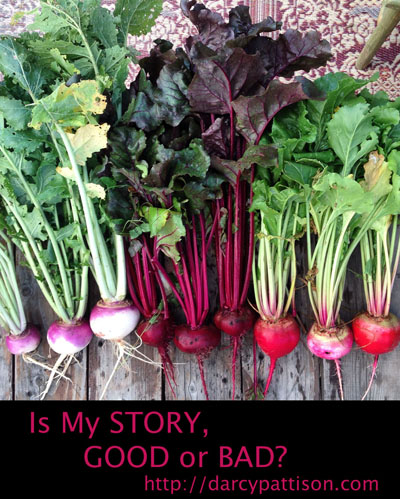
This was expressed in many different ways, of course, but at the core, you want to know what makes one piece of writing good and one piece of writing bad. Is it just a matter of opinion?
When I taught freshman composition, this was a constant problem, as well. An essay turned into one teacher might receive an A, while the second teacher gave it a C; giving grades is one way to answer the good/bad question. Research showed that the solution was simple: teachers needed to meet and discuss criteria for grading. Once they’d gone through a couple essays together, they were more likely to grade consistently.
Why the problems? What does make good writing? The answer isn’t about grammar, and only incidentally about the content of the piece. Instead, you must look at the fuzzy concerns of audience, purpose, genre conventions,
AUDIENCE
Who are you writing for? Do you take the time to search images till you find a person who is your ideal audience? Writing for a middle grade student is very different than writing for a middle-aged history professor.
Again, let me demonstrate this with an example I gave to my freshman comp students. Let’s say that an 18-year-old boy has a car wreck. Now, he must tell three people about that wreck: the policeman, his mom, and his best friend. You can easily imagine each conversation. The tone—apologetic to bravado—changes with the audience. Details creep into some accounts (To Best Friend: Mary was tickling me) and are deleted from others (To Mom and Cop: I was under control of the vehicle at all times).
Which account of the car wreck would be considered “good” and which is “bad”? Is one more truthful than the other; i.e. can you apply the criteria of truthfulness to determine good/bad? You’ll agree that tone, voice, content, style and more depend on the audience.
PURPOSE
When you write a novel, do you want your reader to weep or to guffaw? The purpose of any piece of writing should—in a sane world—determine its effectiveness. Did it accomplish what you set out to accomplish?
In other words, can we use effectiveness of communication as one measure of good/bad?
GENRE CONVENTIONS
Think with me of what you expect from a mystery novel. There’s a murderer, a detective and a dead body (victim). Beyond that, though, one common convention in a mystery is to TELL the answer to the mystery. The detective arranges for all the suspects to be present at the same time, and then explains how s/he cleverly solved the problem. When confronted, the murderer tries to run away. That sort of scene would rarely happen in other genres.
Each genre has its own conventions of characters, events, plot points, settings, and so on. If you break or bend those conventions, you risk angering your readers, who will exclaim loudly, “This is a horrible mystery.”
Is it good writing or bad writing? Wrong question.
Is it a good mystery (according to the genre conventions of today)?
Is My Picture Book Manuscript Any Good?
Do you need to know if your picture book manuscript fits genre conventions? Darcy Pattison and Leslie Helakoski will be teaching PB&J: Picture Books and All that Jazz, April 23-26, 2015 at the Highlight’s Foundation, Honesdale, PA. Learn more about the workshop.
If you can’t see this video, click here.
DOES THE STORY PLEASE YOU?
Aside from issues of audience, purpose, and genre, there’s one that looms large in my mind. Does the story please you, the author? Are you happy with what you’ve done? It’s very hard to step back from your work and evaluate it. Your worries about what others think consumes you, and you can’t separate THEIR opinion from YOUR opinion.
I recently re-read my latest novel, LONGING FOR NORMAL, and at a certain point, it made me cry. A friend read it recently, too, and I asked her, “Did you cry at XXX scene?” No, she didn’t. But when I re-read that scene, I always cry. Is it a good scene? It touches me emotionally in a deep way; but it doesn’t affect my friend the same way. Is it good? Or bad?
Do you start to see that the question is the wrong one? Or that there are really two questions here:
1. Did I write the story I wanted to write?
2. How will others respond to that story?
And the terminology that you use should NOT be good/bad.
Instead, try these criteria: useful, effective, matches genre expectations, pleases me.
Then, you need to ask a final question: Do I want this to be published?
If so, you forget the good/bad question and find a publisher whose purposes, audiences and genre fits what you’ve written. And send it in. Period.
Stop those pestering questions about good/bad. Send it in. You’ll soon find out if it will fly in the marketplace you’ve chosen. If it doesn’t, go back and ask the right questions again: useful, effective, matches genre expectations, pleases me? If you’re sure you’re on target, send it out again. And again and again. Repeat until you find the right market for your work!

The ALIENS have landed!
"amusing. . .engaging, accessible," says Publisher's Weekly
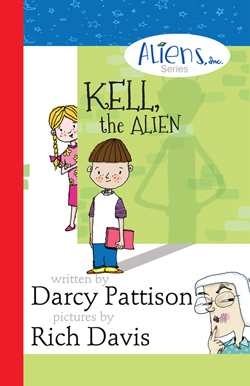 |
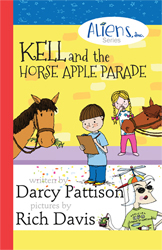 |
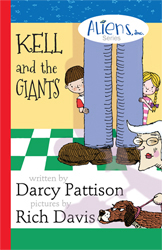 |
I’ve been writing for years. (Let’s not discuss how many exactly!) It’s easy to fall into habits and to think about stories in certain ways. The best creative people, though, insist that they are constantly learning and to do that, they try something different. They take risks.
Let me suggest some risks you might want to take:

Take a creative risk today! Try a new format, genre, audience, or marketing strategy.
If you’ve only written nonfiction, try a novel. Love writing picturebooks? Try a webpost. Good writing is good writing is good writing. But platforms DO make a difference in length, diction (your choice of vocabulary to include/exclude), voice and more. Why not try writing a sonnet?
Try for a different audience. Stretch your genre tastes and try a different one. Write a romance for YAs. Or a mystery for first graders. Are all of your protagonists female? Then try writing from a male’s POV and try to capture a male audience.
Try a different process or word processing program. I took a class on Scrivener this spring and am continuing to explore what this amazing program can and can’t do. I’m also learning Dragon Dictate to lessen the ergonomic strain on my hands. I know that these programs have potential to change not just my writing process, but also the output. I’m just not sure HOW they will affect it. It’s a risk.
Market to different places. While we often separate the writing from the marketing–especially when we think about the creative process–I think you can still take creative risks with marketing. For example, identify a market FIRST, and write specifically for that market. In this case, you are letting the market sculpt your creative output. If you write a short story for Highlights Magazine for Kids, it’s got to be 600 words or less. If you write an op-ed piece for the Huffington Post, everything is different in your creative output. If you decide to self-publish, you may find yourself suddenly taking the question of commercial viability much more seriously.

MIMS HOUSE: Great NonFiction for Common Core

The story of the oldest known wild bird in the world. At 62+, she hatched a new chick in February, 2013. Read her remarkable story. A biography in text and art.
What do you do when your friends or your editors don’t like your story?
This has indeed happened to me several times, the most recent on a current WIP. One of my reliable first readers has been hesitant to say much about this story and I realized that it’s because she doesn’t like it. The story is a tragedy and while I soften the blow at the end, it does end tragically. READER said that the ending was a “sharp left turn.” But for me, it’s a straight arrow right to the heart of the story.
What to do? Revise to please my reader, or keep it “my way”?
I would be a fool to ignore feedback! Of course, I need to know how others view my stories and where the communication breaks down. I will always revise to make sure I am communicating clearly. What is in my head needs to be clearly reproduced in the reader’s head through the medium of words. That’s communication through writing.
But that’s not the case here. Instead, there’s a gap in vision, or an honest difference in how another person view story and how a story should unfold. READER wanted a happy ending.
There are actually four ways a story can end:
- Happy/Happy. The protagonist gets what s/he wants and that makes him/her happy.
- Happy/Sad. The protagonist gets what s/he wants and that makes him/her sad.
- Sad/Happy. The protagonist fails to get what s/he wants, but in the end, that makes him/her happy.
- Sad/Sad. The protagonist fails to get what s/he wants and that makes him/her sad.
My story is the third kind. The protagonist does not get what she wants, but in the end, her goals are accomplished in a different way and she is content and peaceful about it all. I actually think this is a more realistic ending, more true to life. How many times do you get what you want, exactly how you want it? Not often! Yet much of literature is the Happy/Happy kind of ending. That’s great: I do those endings most of the time, too. But this ending satisfies my ideas for this story.

You can’t get a Happy Face from readers all the time. But I always need a Happy Face from myself.
I won’t change it. It makes me sad that READER doesn’t like the story because I chose to end it in an unusual way. I want READER to always like my story. But even when she doesn’t, we remain friends. Instead, I need to realize that my friends, family and even critique partners or editors are not always the best audience for a particular story. And that’s OK.
The post I Don’t Like Your Story appeared first on Fiction Notes.


By: Elena Ornig,
on 9/4/2013
Blog:
Anwers from digital publisher
(
Login to Add to MyJacketFlap)
JacketFlap tags:
story,
people,
Australia,
word,
FEATURED,
audience,
speech,
Answers,
personal experience,
Add a tag
At some point in our life we will face the fear of public speaking when we need to deliver a speech during a special occasion, address an audience, make a professional presentation or simply tell a story to a group of strangers; it is inevitable. Public speaking can be and really should be a satisfying experience. However, the majority of people feel fear, anxiety or experience stage fright. So, how can it be avoided? To answer this question I went to a ‘Dare to Speak!’ workshop at the Helensvale library which was organised by members of Toastmasters International.
It wasn’t news to me that learning public speaking skills can be beneficial to effective communication and help to become a better leader. However, my pen was filling pages very quickly and I am happy to share what I learnt with you.
‘Dare to Speak!’ was well-organised, presented and lead by the Master of Ceremonies – ...
Read the rest of this post

By:
Darcy Pattison,
on 8/12/2013
Blog:
Darcy Pattison's Revision Notes
(
Login to Add to MyJacketFlap)
JacketFlap tags:
loyal readers,
blogging,
fans,
readers,
publicity,
audience,
author website,
novel revision,
online promotion,
Add a tag
START YOUR NOVEL
Six Winning Steps Toward a Compelling Opening Line, Scene and Chapter

- 29 Plot Templates
- 2 Essential Writing Skills
- 100 Examples of Opening Lines
- 7 Weak Openings to Avoid
- 4 Strong Openings to Use
- 3 Assignments to Get Unstuck
- 7 Problems to Resolve
The Math adds up to one thing: a publishable manuscript.
Download a sample chapter on your Kindle.
Jane Friedman, a former editor at Writer’s Digest and now a superb blogger and commenter on the state of the publishing industry, spoke at the 2013 Midwest Writers Workshop about building a readership or audience on her personal blog at www.janefriedman.com. When she left Writer’s Digest, her blog there had a great following, but that belonged to WD. How did she regain a significant following of 750,000 readers/year? Watch Jane discuss her strategies here.
If you can’t see this video, click here.

Follow our Pinterest Boards
Writers need to be a part of the wider reading community, not just the writing community. Yes, you need to do it as part of your book marketing, but it’s also a way to widen your outlook about literature in general.
I recently judged the state level of the Letters about Literature writing contest for the Center for the Book. It was a fruitful day for me as a writer, because fellow-judges were librarians and teachers. Mention a recent title and you got an avalanche of opinions. What a refreshing day!
Input from the wider reading community is crucial for writers to maintain a balance. We sit in our caves and focus on the production of words to the exclusion of readers. Listen, there are lots of passionate readers out there.
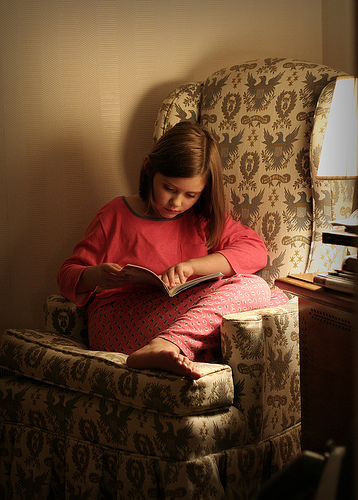
The Letters About Literature contest asks students to write a letter to an author and explain how and why the author’s book impacted their lives. Wow. The range of books represented, the variety of authors and the passion of the students reminded yet again why we do this. Yes, to us and to us alone, it is the process that matters the most. But when our books go out into the world, it is the reader that matters. Connecting, angering, tickling, disgusting, enraging, delighting–our books should evoke something in that reader.
By stepping out of my writing cave and into the judging today, I was reminded that I do this for myself AND for the kids who read what I write. Today–I salute those readers. Thank you for caring so much about literature, for allowing words to touch you in deep and lasting ways.


By: Alice,
on 9/7/2012
Blog:
OUPblog
(
Login to Add to MyJacketFlap)
JacketFlap tags:
colbert,
The Daily Show,
Ayn Rand,
host,
burns,
Goddess of the Market,
Jennifer Burns,
*Featured,
The Colbert Report,
Law & Politics,
paul ryan,
Business & Economics,
backstage,
Ayn Rand and the American Right,
rand,
interview,
History,
US,
Current Affairs,
report,
daily,
jennifer,
audience,
stewart,
Add a tag
By Jennifer Burns
How does being a guest on The Colbert Report compare to being a guest on The Daily Show? Here’s a breakdown!
More Face Time with Everyone: Backstage at The Daily Show was a blur; I had no sooner arrived than I was in make-up, met Jon, and was heading out into the lights. By contrast, I had lots of time at The Colbert Report to see the stage, meet the producers, and chat with sundry tech people. And I got way more face time with Stephen Colbert! “I’m not my character!” was pretty much the first thing he said to me. He explained that he would feign willful ignorance and my job was to educate him and the audience. And of course we talked about Ayn Rand. Colbert told me he read Anthem in a Christian ethics class in college, and then while backpacking in Europe traded somebody for Atlas Shrugged. But he only made it to the scene where Dagny discovers world renowned philosopher Dr. Hugh Akston flipping burgers at a roadside diner and recognizes his genius by the way he handled a spatula — this stretched credulity for Colbert and he gave up on reading the rest!
The Audience: The audience was a much more intimate part of The Colbert Report than The Daily Show, where guests make a grand entrance and can’t even see the audience because of the blinding lights. This time, I was seated on the set for about a minute beforehand in full view of the audience, and their laughter and response seemed a bigger part of the interview. While I was waiting to go on, I could hear everyone laughing uproariously, clearly having a great time, and that made me feel excited and ready.
The Host: The biggest difference, of course, is Jon vs. Stephen, but I had an unexpected reaction. Where most people seem to think Stephen Colbert would be a more difficult interview, I actually found him to be personally warmer and easier to talk to than Jon Stewart. Some of this was because I felt more confident the second time around. But the interview itself was also less serious and more of a performance, whereas on The Daily Show I felt I was being grilled by a formidable intellect. Before The Daily Show interview, the producer told me it would be extemporaneous, and that Jon didn’t have notes. But as I was waiting for my interview with Colbert to start, I was told he was finalizing his jokes. When I was seated on the set, I could see a detailed note card on Stephen’s side of the table. I’m pretty sure we veered off the script, but that level of planning was reassuring. The Colbert producer also did a great job of helping me understand what would create a good interview. Her top piece of advice (which I also heard at The Daily Show): “Don’t be funny!”
Author Jennifer Burns on The Colbert Report
Author Jennifer Burns on The Daily Show with Jon Stewart
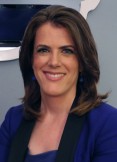 Jennifer Burns is Assistant Professor of History at Stanford University and the author of Goddess of the Market: Ayn Rand and the American Right. A nationally recognized authority on Rand and conservative thought, she has discussed her work on The Daily Show, The Colbert Report, Book TV, and has been interviewed on numerous radio programs. Read her previous blog post: “Top Three Questions About My Interview On The Daily Show”
Jennifer Burns is Assistant Professor of History at Stanford University and the author of Goddess of the Market: Ayn Rand and the American Right. A nationally recognized authority on Rand and conservative thought, she has discussed her work on The Daily Show, The Colbert Report, Book TV, and has been interviewed on numerous radio programs. Read her previous blog post: “Top Three Questions About My Interview On The Daily Show”
Subscribe to the OUPblog via email or RSS.
Subscribe to only American history articles on the OUPblog via email or RSS.
Subscribe to only law and politics articles on the OUPblog via email or RSS.
Subscribe to only business and economics articles on the OUPblog via email or RSS.
View more about this book on the 



By: Elena Ornig,
on 7/10/2012
Blog:
Anwers from digital publisher
(
Login to Add to MyJacketFlap)
JacketFlap tags:
life,
story,
authors,
film,
writing,
writers,
FEATURED,
audience,
creating character,
Add a tag
Answers from Anya Tretyakova.
The notion that theatre and film share many similarities, is not a new one. Both are their own ‘stage’ for the trials and tribulations of the characters that inhabit them. Either medium affords the creator a great depth of exploration into the human character; what it means to be a person in any given place or time, but more importantly, what it means to be at all. Two such ‘creators’ or authors of theatre and film, vital to each medium, are Luigi Pirandello and Woody Allen, respectively. Not only are both authors important, but they are clearly intertwined in their works, the former clearly influencing the latter, albeit perhaps indirectly; a legacy stretching over a period of more than a century.
Luigi Pirandello was born in 1867 in a farmhouse in Il Caos, located between Porto Empedocle and Agrigento, Sicily (Giudice). From such humble beginnings, he became one ...
Read the rest of this post
By: Katie Cusack,
on 7/6/2012
Blog:
Scribble Chicken! Art and Other Fun Stuff
(
Login to Add to MyJacketFlap)
JacketFlap tags:
illustrator,
children,
publisher,
children's books,
Illustration,
animal,
cute,
dance,
book,
pet,
pets,
ballet,
nature,
outdoors,
weird,
painting,
child,
children's book,
silly,
grow,
vintage,
audience,
stage,
ferrets,
ferret,
outside,
sign,
performance,
dancer,
costume,
publish,
strange,
growth,
outdoor,
Oil Style,
perform,
Add a tag

by Scott Rhoades
Ask a writer about the intended audience for her book and she'll likely say, "4th to 8th grade kids," or maybe she'll get more specific and say, "Girls around 9 to 11." That helps, and it's probably enough, but what if you narrowed it down more?
What if you used the technique that is often used by product designers (at least in the software industry, which I know, and likely in other industries I don't know so well)? In the software world, designers create personas, specific make-believe people who are based on real data collected about customers. For example, "We're aiming this product at Michael, a sales manager for a manufacturer of boating accessories who needs to track the sales and commissions of his staff of 12 international sales people. Michael is 42 years old, and likes to spend his weekends boating and camping, but often has to skip fun weekends out on the lake to process the latest sales data from his staff. He's looking for a product that will automate much of the work he now does by hand, especially the creating of reports he sends to his director every Monday morning."
Michael is not necessarily a real person. He's more likely a composite of several customers or prospective customers who have been visited by product designers. But he becomes real to the designers. They will probably even find a photo of "Michael" and post it someplace as a reminder of their target audience.

We can do the same thing. Instead of aiming at "Junior-high-aged girls," write for Becca, a thirteen-year-old girl who enjoys reading fantasy novels as a way to escape the boredom of her life. Becca is a good student when the teacher holds her interest, but even though she's fascinated by history, she thinks it's boring in classes. She thinks of herself as an outsider at school because she doesn't quite fit in with any of the usual groups. She prefers a few good friends to a large circle of people. She feels awkward in social situations, especially if there are boys or popular girls involved. Teachers are often unsure how to work with her because she doesn't often seemed engaged in her lessons, but she is actually listening very carefully while she doodles in her notepad. She likes spaghetti and other pastas with tomato-based sauce, but is more likely to grab something cold from the pantry or fridge than to heat something up. She's read the popular books like Twilight and Harry Potter, but she hasn't found anything that she really loves. Still, reading anything is better than nothing, and she loves a story she can immerse herself in. She loves the feel of books, especially older books, but says she prefers to read ebooks because she considers it an invasion of her privacy for others to see what she's reading. In reality, it's more a case of being self-conscious and afraid other will jump to conclusions about her if they see what she's reading.
Get as specific as you can, then think about Becca when you're writing. Go beyond types (in other words, do better than I did in my example) and make her real. That's the key. She has to be real to you. Internalize her. Find a picture that looks like her. Make her as important to your story as the characters you want her to identify with.
When you're unsure how to resolve a story situation, consider what Becca would like to read. Go out on the Internet and find a picture of somebody who might be Becca and post it prominently in your writing area. Don't be surprised if Becca becomes a character in your story after all that work figuring out who she is, but

By: Elena Ornig,
on 4/7/2012
Blog:
Anwers from digital publisher
(
Login to Add to MyJacketFlap)
JacketFlap tags:
publisher,
book,
authors,
PUBLISHING,
writing,
writers,
word,
digital publishing,
audience,
Answers,
writing book,
Add a tag
Answers from Publisher
The real number of the authors in Australia can be only estimated approximately. So far, the figure is between 5,000 -10,000 authors that are considered to be fully employed or employed as a part-time. However, the authors now becoming the publishers by adding numbers of the authors quite significantly. Go figure it out!
Internet puts everything in different perspective for the publishing industry as a whole. Regardless to many changes, every country is trying to ‘save’ their publishing industry against the unavoidable globalization and legal reformation of publishing industry, internationally. Australia takes these changes seriously, in order to protect its own publishing industry by shielding it from foreign competition, respectively through import restrictions.
Basically we are talking about availability, price and quality matter of the books. . In order to protect copyright beyond the borders, Australia had signed two international agreements: 1886 Berne Convention for the Protection of Literary and Artistic Works and ...
Read the rest of this post
 |
Most of the books we read aren't anything like what
we wrote in high school. Credit | Elizabeth Humphrey |
This past week, I’ve been getting about a dozen articles edited and ready for publication. They are written by others and I’ve noticed some similarities among the majority of submissions. They were written as if the articles (stories conveying a beginning, middle, and end) are reports written for a high school English teacher (thesis, supporting points, conclusion).
Now, don’t get me wrong, reports for English teachers are important. Necessary, particularly if you are navigating your way through high school. But judging your audience for anything you are writing and there are few publications that many of us write for that are directed at our English teachers.
But three-part essays are the writing experiences many of us are used to before we launch into writing for magazines. We may read books and books that look nothing like a high school essay does and still we continue to replicate the form.
Here are some tips for your drafts to catch yourself if you tend to keep your drafts out of high school:
1. It starts during the planning stages. Scribble out an outline. Doesn’t have to be an “official” outline. Just something that can guide you through your story and help you keep track of the information. I often find that if you sketch something out, the informal structure can give your story’s flow a more informal feel.
2. Watch your language. If you need to look up every other word you are using, take a step back. You want your general audience to understand what you are saying. If you don’t, how will they?
3. Massage your transitions. I know when I’m trying to write a research paper, my transitions use a lot more of the “therefore” and “however” language. What are your transitions doing? Are they formal or more informal? I know when I’m reading a well-written article, written for a general audience, the language is straightforward and the transitions seem easier.
4. Provide a soft landing. Some articles deserve to bring the article back to the beginning to make a point. Others just need to end. Don’t try to force an ending that isn’t there for the story.
5. Re-read! Read your story back to yourself—out loud—and read it as your audience would. Not as your English teach might.
That’s it…no false ending. Now, get out there and write!
Elizabeth King Humphrey is a writer, teacher and editor living in North Carolina. And she had some of the best high school English teachers. Ever.

By: Elena Ornig,
on 12/9/2011
Blog:
Anwers from digital publisher
(
Login to Add to MyJacketFlap)
JacketFlap tags:
idea,
audience,
press release,
Answers,
MARKETING,
editors,
advertising,
traffic,
market,
Add a tag
Answering your questions about Press Release structure.
Timing: Press release can be “for immediate release”, or “release on a specific date”. It is recommended to use the first preference since the latter may not be honored at all times.
Target: To whom the press release is intended. When targeting a specific group of people or professions, it may read like the following: Attention sports editors, Attention business editors, Attention entertainment editors.
Headline: This can be opted to write in all capital letters. Consider using shorter titles and make it interesting. Alliteration can be of help or giving tips.
Sub-Headline: This is optional. However, sub headlines are used to get the attention of readers and audience. This also provides a description of the target niche or specific topic.
Date: It is necessary when reporting, such as news clip or other events specified with a date. For example, a press release written for some key speaker for ...
Read the rest of this post
by Deren Hansen
I recently suggested that
Genre is no more or less complicated than identifying your audience. Put another way, genre is a crude, pre-Internet way of approximating, "customers who liked this also liked these others."
The problem of categorization doesn't go away in the coming e-book utopia where we won't be limited by traditional bookstore shelving constraints. In fact, the always-on world of digital media multiplies the opportunities (or demands) to know what other books your is like.
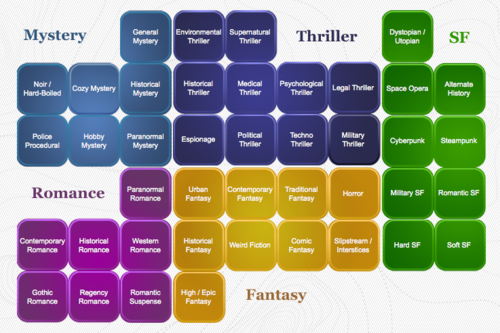
So, how can you confidently determine the genre of the book without reading every other genre? The good folk at
Book Country have produced an
interactive genre map. (The example here is only an image.) Click on a genre to see a list of representative books.
One of the ways to use the map is as a guide for your reading. Once you've chosen which of the five general genre feels most like home, go through the sub-genres and make sure you've read at least one book in each list.
Still not sure where your book belongs because it's a thrilling romantic mystery set in a future where a technological society battles medievaloid magic users? Try the exhaustive, pair-wise comparison exercise: for each pair of genres, if you can only choose one, which genre best characterizes your book. Then tally up the winner for each pair. The genre with the highest score is your primary genre.
I should point out that the genres in this map are for adult fiction. Young Adult and Middle Grade books can be classified in similar terms, but were, until recently, all shelved together. Barnes & Noble now has different shelves for YA genres like paranormal. In other words, while genre boundaries aren't quite as strictly drawn in children's literature, you can't ignore the question.
Deren blogs at The Laws of Making.

By: Elena Ornig,
on 11/22/2011
Blog:
Anwers from digital publisher
(
Login to Add to MyJacketFlap)
JacketFlap tags:
writing book,
creating character,
book,
publishing,
WRITING,
people,
process,
language,
research,
readers,
message,
audience,
Answers,
Add a tag
Answers from Elena Ornig
“The task of a writer consists of being able to make something out of an idea.” Thomas Mann
For a long period of time from initial human’s need of recording important information, the writing activity has become the vital instrument of generating meaning.
Obviously, the written language and the spoken language are not the same. So, when you write, you have to take into consideration the differences between the literary (written) language and non-literary (spoken) language which you surely remember from school lessons.
At this point, I would like to bring to the writer’s attention an extra matter.
When you write a story, narrative or novel, you must clearly understand who you write it for. When you write you have all the time you need to be precise, deliberate and sophisticated; therefore, take your time and analyse what is the purpose of your written creation. What statement do you want to ...
Read the rest of this post
by Deren Hansen
In an early episode of
The Appendix, a writing podcast,
Robison Wells, Sarah Eden, and Marion Jensen discussed choosing a genre.
Marion Jensen said, "When you pick a genre, you've got to pick something that you like. It's kind of like picking a career."
That's right, writers. No pressure. Just like the end of high school when well-meaning people like guidance counselors and parents say, "Now that you've spent your life listening to us tell you what to do, it's time for you to make a decision, oh and by the way, this decision will have life-long consequences."
Choosing the genre in which you'll write is a critical decision only if you succeed.
Why?
Because with each book you publish you create precedents and build expectations among your growing circle of readers. It's not that you can never try anything different, but imagine the hue and cry if J. K. Rowling decided she wanted to write gritty detective stories full of graphic sex and violence.
The advice about picking a genre is better understood in terms of setting up shop someplace where you're comfortable because you could be spending a lot of time there.
One of the reasons this seems like a big deal is because genre is to kind as veal is to beef. This is another in a long series of cases where we have two words in English with the same meaning, but the Latinate, or more specifically French, version sounds more sophisticated.
Repeat after me, "Genre means kind." It's nothing more or less complicated than deciding what kind of books your book ought to be shelved or grouped with.
And why does that matter?
Because you're hoping to take advantage of recommendation engines, whether human or automatic, that will suggest someone might like your book if they liked something similar.
Put another way, in terms of
publishing being a market, genre is shorthand for your audience.
That's why you must decide on your genre: you must
know your audience and their expectations.
Deren blogs daily at The Laws of Making.
Answers from Anya Tretyakova
What’s In A Name?
The Postcolonial texts of Translations and Pantomime use language to express the oppression and destruction of the colonised culture.
Postcolonial Text is a refereed open access journal that publishes articles, book reviews, interviews, poetry and fiction on postcolonial, transnational, and indigenous themes.
When studying Postcolonial texts, it is difficult, if not impossible to conduct any amount of academic research without encountering a multitude of debate over the usage of language and linguistics within these texts. Postcolonial theatrical texts are no exception. If success in linguistic interaction is predicated on a mutual effort toward a common goal (Elam 155), then the outcome must be severely impaired when participants’ goals do not align. Furthermore, the use of a language that is not your own, to express your own thoughts, feelings and identity, is made all the more difficult when one cultural group attempts to coerce another cultural group ...
Read the rest of this post

By: Maryann Yin,
on 7/18/2011
Blog:
Galley Cat (Mediabistro)
(
Login to Add to MyJacketFlap)
JacketFlap tags:
Six-Word Memoir,
audience,
summer camp,
Smith Magazine,
Ann Leary,
Ava Crawford,
Deborah Copaken Kogan,
Gerald Hayes,
Joe Iconis,
Josh Wolk,
story slam,
Susan Blackwell,
Contests,
Add a tag
 On Monday July 25th, Smith Magazine will sponsor the summer edition of the Six-Word Memoir Slam. The theme for this event will be: “I’m Only Popular at Summer Camp: Six-Word Memoirs on Camp, Summer Stock, and the Family Vacation.”
On Monday July 25th, Smith Magazine will sponsor the summer edition of the Six-Word Memoir Slam. The theme for this event will be: “I’m Only Popular at Summer Camp: Six-Word Memoirs on Camp, Summer Stock, and the Family Vacation.”
Share your six-word memoir at this link for a chance to be part of the literary lineup at the reading. The slam will include author Ann Leary, actress Susan Blackwell, writer Joe Iconis, novelist Deborah Copaken Kogan, NYMag.com editor Josh Wolk, comedian Gerald Hayes, teen scribe Ava Crawford.
Here’s more about the memoir slam: “The night starts at 6 p.m. with a Happy Hour at the 92YTribeca’s amazing bar, where you can meet other six-lovers over drink specials. At 7pm, the show begins: six performers, six minutes each to tell their story. The evening ends with an audience participation Six-World Slam: you’re invited to share your own six words on this hot, fun, miraculous and messy thing called summer.”
New Career Opportunities Daily: The best jobs in media.
by Deren Hansen
The genre into which your book falls is one of the basic pieces of information you're supposed to include in your query.* I approach things systematically, so I've thought about genre in library terms--that is as a way of organizing a spectrum of materials (with the implicit assumption that readers were like library patrons).
When I visit the library, liking a book is a secondary (or tertiary) concern, well behind basic questions like, "Does it provide the information I need?" Even with fiction, I survey the shelves and then scan the books, looking at more than the first page, to determine my interest.
In a book store, however, the fiction buyer is generally there to find something they like, not to survey the offerings. With the exception the exception of mega-best-sellers that become an independent cultural forces, not everyone will like your work.
In fact, most people won't.
Thanks to the practical matter of only having twenty four hours in a day, I don't "like" about 95% of what's in the book store.** Assuming I'm representative, it follows, then, that 95% of the people out there won't "like" our work.
Here's my epiphany: getting published is really about finding an audience.
Notions like genre are at best an approximation of an audience. So are all the rules and expectations of genres and commercial publishing. The zeal with which the gatekeepers sometimes seem to uphold these rules only shows their best guesses as to what a given audience wants.
So what does all this mean?
We'll be on a much more positive footing with both gatekeepers and the buying public if we don't try to please everybody but look instead for the people with whom our work resonates.
* Indeed, before we query, we're supposed to go to the book store, find the spot where our books will be shelved, and make a space that will be filled someday.** Not "liking" 95% of what's in the book store isn't a matter of good or bad. It's simply that I don't have the time to pay attention to all that material. Deren blogs daily at The Laws of Making.
By Lauren
I was heartened to read this recent piece on Deutsche Welle (via Publishers Lunch Automat) about Germany’s love affair with American fiction. It’s been my experience as rights director that Germany is the one market we can really count on to buy the books we have rights to in a wide variety of categories—the one market where we don’t tend to hear, “Well, we know it’s big everywhere, but here we just don’t buy American (fill in the blank).” It helps of course that it’s among the largest book markets in the world. It’s a nice counterpoint to a discussion we had here a while back about how American literary fiction is often too insular for everyone else to get excited about. Those interested in the ways in which books cross borders should give it a read!
by John
There was
a fantastic op-ed piece by Michael Cunningham in this past Sunday’s
New York Times, a must-read for anyone who wants to write. While ostensibly a piece about translation, Cunningham brilliantly articulates how writing is not an act of solo invention, and how it’s crucial not only for writers to recognize that they’re writing for an audience, but to identify specifically who that audience is as well. It’s a secret that successful genre writers know instinctively, but I’ve never seen it so neatly laid out for the general reader.
And I was particularly struck by how Cunningham improved his art through learning to write for an audience of one, namely Helen the hostess at a restaurant bar where he used to work. On first glance, it seems to go against common sense—I always assumed that even if you’re writing for a specific audience, like mystery fans or teen readers, you want to create something with broad enough appeal for all members of that audience. But then again, as Cunningham suggests, targeting a specific reader like Helen might actually create a more intimate conversation between author and reader and, hence, result in a better piece of work.
Obviously, there’s no right or wrong answer here, but again, kudos to Cunningham for framing the issue in such an elegant and accessible piece. No wonder this guy won a Pulitzer!
Thinking about how engaging One Crazy Summer might be for teachers to read with children, StorySleuths asked master teacher and 2008 Newbery Committee member Monica Edinger to share her thoughts and experiences of reading the story aloud to her class. Her insights illuminate considerations we as writers would do well to heed. For more of her insights about books for children, reading, writing, teaching, and much more, check out her blog Educating Alice. (Photo is of Rosemary Brosnan and Rita Williams-Garcia with Monica.) This post may make you wish your children could be in Monica’s class! When I received the ARC for One Crazy Summer around a year ago, I took a look at the flap copy and was immediately intrigued. The summer of 1968? Folks in Afros and black berets? A time and people that I’d yet to see much of in stories for the age group I taught --- fourth graders. Those I had encountered often felt overly earnest, their authors working hard to make connections to situations today, say linking the Vietnam War to our current engagements in Afghanistan and Iraq. Or they focused on familiar icons and events of the civil rights movement. This book looked different.And so it turned out to be. During that first reading a year ago I fell completely in love with those three sisters, their story, and Rita’s poetic and elegant prose. Months later, after learning that I’d reviewed it for the New York Times, my fourth grade students asked me to read it to them. They were alert and insightful listeners --- laughing as Fern said yet again “surely,” curious about the Black Panthers (I showed them that photo of Huey with the shotgun), and moved (not upset) by the girls’ complex mother.As I read and reread the book, on my own and to my students, I was progressively more and more impressed with Rita’s sensitivity for her intended audience. I've noticed that this is a particularly tricky thing for those writing for children. Some claim not to be aware of their audience while others seem too aware. Don’t you, I've ask some writers, think about your intended reader when writing? No, some of them answer, I only think about the story. But, I will persist, you clearly make decisions that affect that audience. You use one word instead of another. You consider what a young person will know or not know. Perhaps you do it unconsciously, but you do it. No, they will tell me, I just think about my story not about who will read it. At the other end of the spectrum are those writers who over-think and over-focus on their young readers. These are writers who earnestly and always with the best of intentions, moralize and instruct all too obviously. One hilarious example is Lewis Carroll who talks down most cloyingly to his young audience in his Nursery Alice.
4 Comments on Guest post by Monica Edinger--ONE CRAZY SUMMER: Attending to your audience, last added: 7/13/2010

















 On Monday July 25th, Smith Magazine will sponsor the summer edition of the
On Monday July 25th, Smith Magazine will sponsor the summer edition of the 
 Wisconsin. His newest book,
Wisconsin. His newest book,
Well, so much for my paranormal mermaid western romanctic historical mystery thriller set in outer space. Shoot! Now what?
Maybe you could add vampires, a school for magic, and sell it as literary fiction which explores a surreal mind-scape.